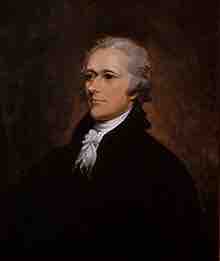Long dissatisfied with the weak Articles of Confederation, Alexander Hamilton of New York played a major leadership role in drafting a resolution for a constitutional convention, which was later to be called the Annapolis Convention. Hamilton's efforts brought his desire to have a more powerful, more financially independent federal government one step closer to reality .

Alexander Hamilton
Hamilton called the Annapolis Convention together and played a prominent role in the Philadelphia Convention the following year.
The defects that the convention was to remedy were those barriers that limited trade or commerce between the largely independent states under the Articles of Confederation. The convention, named A Meeting of Commissioners to Remedy Defects of the Federal Government, met from September 11 to September 14, 1786. "New Hampshire, Massachusetts, Rhode Island, and North Carolina had appointed commissioners who failed to arrive in Annapolis in time to attend the meeting, while Connecticut, Maryland, South Carolina and Georgia had taken no action at all. Because of the small representation, the Annapolis Convention did not deem "it advisable to proceed on the business of their mission. " After an exchange of views, the Annapolis delegates unanimously submitted a report to their respective States in which they suggested that a convention of representatives from all the States meet at Philadelphia on the second Monday in May, 1787. The report expressed the hope that more states would be represented and that their delegates or deputies would be authorized to examine areas broader than simply commercial trade. At the resulting Philadelphia Convention of 1787, delegates produced the United States Constitution.